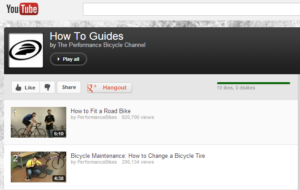 Video has exploded as an online marketing tool over the past few years for B2C marketers. As the interent’s second most popular search engine, YouTube has reduced the barriers to entry to almost nil. As a result, marketers quickly jumped on board with vloggers and other personalities to capitalize on video’s ability to capture and hold the interests of an increasingly attention-deficit consumer.
Video has exploded as an online marketing tool over the past few years for B2C marketers. As the interent’s second most popular search engine, YouTube has reduced the barriers to entry to almost nil. As a result, marketers quickly jumped on board with vloggers and other personalities to capitalize on video’s ability to capture and hold the interests of an increasingly attention-deficit consumer.
In fact, video is second only to feature articles as the content marketing tactic with the greatest ROI, according to eMarketer. Video allows marketers to connect with web and mobile customers, across websites, social media and apps, in order to offer targeted information in a visual and auditory format appealing to a wide audience.
Online retailers are especially fond of video as a content marketing tool; 48% of the top 50 online retail companies used video on their websites in 2012, a 200% increase from the previous year.
Bloomingdale’s, for example, revamped their video strategy to move from simply providing information to building stronger relationships with customers by making videos an interactive tool. Click-to-buy components in video and discounts or exclusive offers are an incentive for customers to engage brand content, while exclusive information makes them feel “in-the-know” and more apt to share their knowledge (via brand content) with friends.
Bloomingdale’s leveraged these strategies to completely overhaul their video collection in 2012, according to online video distributor Touchstorm. “Nothing can hook you and pull you in like video,” said Sean Womack, senior vice president of marketing and production at Touchstorm. “With branded editorial videos, retailers get the opportunity to be what they really are — experts in their fields — and they get to share it with an audience who is actively searching for that expertise, or an audience that is Googling it right at this moment,” he said. “Video is social currency.”
Cycling retailer Performance Bike created a series of how to videos on topics important to bike enthusiasts, such as changing a tire or adjusting a derailleur. Their video content marketing strategy serves to frame their brand as the authority and keep them top of mind to customers whose needs will inevitably shift from information-seeking to solution-seeking, at some point. When that happens, they’re ready with their products as the ideal solution and are a trusted resource for buyers.

Performance Bike’s YouTube channel is now a hub of activity, with over 6,000 subscribers and 3.5 million video views.
 Auto manufacturing giant Ford are also experiencing success in video content marketing. Their YouTube channel has over 4 million views and 136,000 subscribers. Their global head of social media has always been a bit ahead of the curve, though; five years ago he was already into video and warning advertisers to get ready.
Auto manufacturing giant Ford are also experiencing success in video content marketing. Their YouTube channel has over 4 million views and 136,000 subscribers. Their global head of social media has always been a bit ahead of the curve, though; five years ago he was already into video and warning advertisers to get ready.
In a blog post, Monty described an app he had his eye on: “It leverages web video and consumer-generated content, but in a new and different way that doesn’t require much in the way of new content development. They call it Overlay.tv. I call it fully interactive and annotated video that has the power to change the way advertisers think about online video.”
Indeed, we have changed the way we think of video as a content marketing tool. Eighty percent of all marketers now use video as part of their strategy and people are watching; 60% of the consumers who encounter online videos will watch them.
How do you use video marketing to build brand authority, engage consumers and ultimately drive sales?


